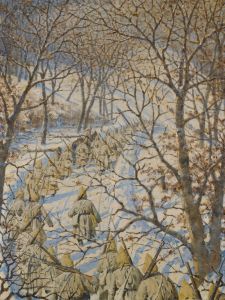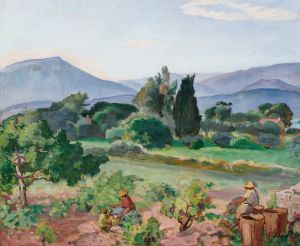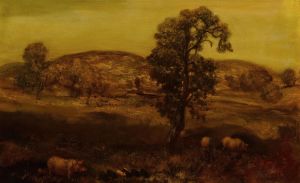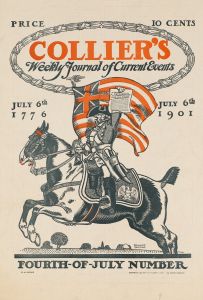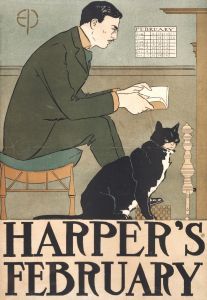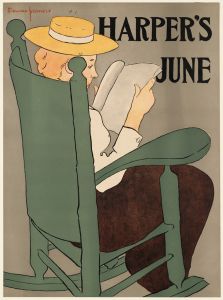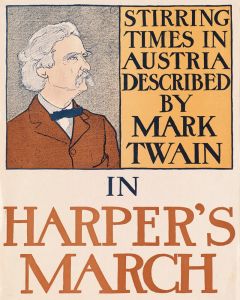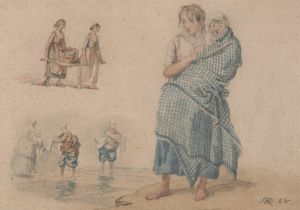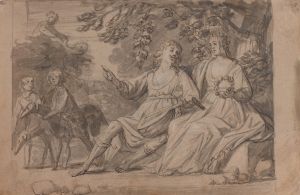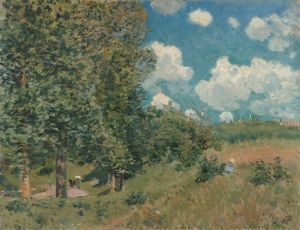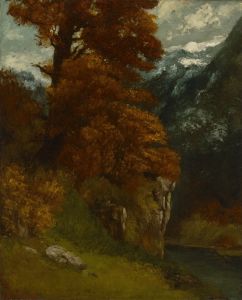
Harper’s October
A hand-painted replica of Edward Penfield’s masterpiece Harper’s October, meticulously crafted by professional artists to capture the true essence of the original. Each piece is created with museum-quality canvas and rare mineral pigments, carefully painted by experienced artists with delicate brushstrokes and rich, layered colors to perfectly recreate the texture of the original artwork. Unlike machine-printed reproductions, this hand-painted version brings the painting to life, infused with the artist’s emotions and skill in every stroke. Whether for personal collection or home decoration, it instantly elevates the artistic atmosphere of any space.
Edward Penfield was a prominent American illustrator and a key figure in the development of graphic design in the late 19th and early 20th centuries. He is best known for his work as an art director for Harper's Magazine, where he produced a series of monthly cover illustrations that became iconic representations of the period. One of his notable works is "Harper’s October," which exemplifies his distinctive style and contribution to the world of illustration.
"Harper’s October" was created as a cover illustration for Harper's Magazine, a leading publication of its time. Penfield's work for Harper's was instrumental in establishing the magazine's visual identity and played a significant role in the popularization of the poster style in America. His covers were characterized by their bold use of color, simplified forms, and clear, engaging compositions, which made them stand out on newsstands and attract readers.
Penfield's style was influenced by the Art Nouveau movement, which was characterized by its use of organic forms, flowing lines, and an emphasis on decorative arts. However, Penfield adapted these elements to suit the American audience, focusing on clarity and directness. His work often depicted contemporary scenes and figures, capturing the essence of American life at the turn of the century.
In "Harper’s October," Penfield employs a limited color palette, which was typical of his work due to the printing technology of the time. This constraint, however, did not limit his creativity; instead, it allowed him to experiment with composition and form. The illustration likely features a seasonal theme, as was common for magazine covers, reflecting the time of year and engaging the reader's interest through relatable imagery.
Penfield's covers for Harper's were not only artistically significant but also commercially successful. They helped to elevate the status of illustration as a legitimate form of art and contributed to the burgeoning field of graphic design. His work is often credited with influencing future generations of illustrators and designers, setting a standard for magazine cover art that balanced artistic expression with commercial appeal.
Edward Penfield's legacy extends beyond his work for Harper's. He was a prolific artist who contributed to various publications and advertising campaigns, leaving a lasting impact on the visual culture of his time. His ability to blend artistic innovation with practical application made him a pivotal figure in the transition from traditional illustration to modern graphic design.
Today, Penfield's illustrations, including "Harper’s October," are appreciated for their historical significance and artistic merit. They offer a glimpse into the cultural and social dynamics of the late 19th and early 20th centuries, reflecting the tastes and interests of the American public during that era. His work continues to be studied and admired by art historians, designers, and enthusiasts alike, ensuring that his contributions to the field of illustration are not forgotten.





